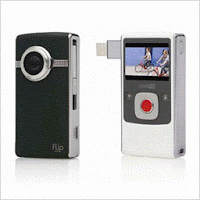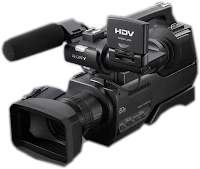
The SONY HD flip cam for the preliminary task and

The SONY HDV 1000 professional tape camera.
It caused many problems and started to slow down our progression as we couldn't figure out the basic stuff such as how to turn it on, switch it to specific modes etc. But after playing around and asking the technicians, i quickly managed to get to grips with the camera. I naturally held a steady shot and was able to do things such as slow zooms and more which helped our group a lot because if not, this would have held back our group down even more so (not forgetting the fact that we were one man down!)
During planning we had to make sure that the basic things like the camera had enough battery so we were able to film at our location. During the process of editing we had to have a lot of jump cuts and edits, as that keeps our audience hooked and didn't want to bore them, so we had to go back after our rough cut and re-add more editing to construct our final piece.
Other technologies that was a major problem was the Apple Mac. The main problem was everyone had never used these programmes before. During editing, we managed to familiarise ourselves with the softwares, applications and programmes such as "Final Cut" which was where we edited and put together our film. However, we all had a go to use the programmes Final Cut and Adobe After Effects. A few problems that Final Cut created was that there was many effects available but we didn't know which ones to use. After playing around on it for a bit we realised that speeding up certain scenes and actions that were repetitive, made it look less tedious and more dramatic. The speeding up effect worked well as it made our protagonist look mad, on the verge of insanity. Furthermore we wanted the past to be presented in black and white so the audience and viewers could differentiate the two, and it only took one click of a button to do that (desaturate).
We were told that credits and titling could be created effectively on Adobe After Effects so myself and Beth had a go using it. However, after only wanting a simple crediting effect, with a transition to fade in and out, we realised that this could be done on Final Cut itself. The only thing that was used from Adobe After Effects was the end title Behind Closed Doors. It has a simple yet effective look where it appears soon after the 'blackout' of the ending scene and did not cause issues when transferring it onto Final Cut.
Our final problem that we eventually overcame was rendering. We couldn't understand why it needed to be rendered and this kept happening quite often, with the red line, we had to keep having to export the file to watch our product which wasted time and evidently couldn't always rely on technology to work in our favour. When we got told that the rendering function was "command + R", it froze a few times, so we had to save consistently in order to be safe about having our project secure. Rendering is done because some videos (quality type) aren't compatible with the software and rendering is done so the video can be interpreted and read.
No comments:
Post a Comment